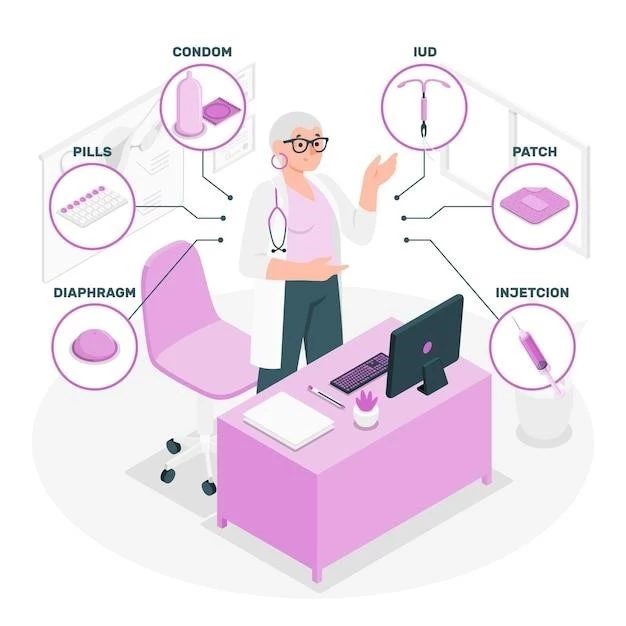Introduction to Tyrosinemia
Tyrosinemia, also known as tyrosinaemia, is a rare inherited disorder impacting the body’s ability to metabolize the amino acid tyrosine properly․ This condition can lead to severe health complications if left untreated․
Tyrosinemia, also known as tyrosinaemia, is an inborn error of metabolism characterized by the body’s inability to effectively metabolize the amino acid tyrosine․ This genetic disorder can lead to the accumulation of toxic byproducts of tyrosine breakdown, causing damage primarily to the liver, kidneys, and other organs․ Tyrosinemia is classified into different types based on the specific enzyme deficiencies involved in tyrosine metabolism․
Definition and Overview
Tyrosinemia, also known as tyrosinaemia, is an inborn error of metabolism characterized by the body’s inability to effectively metabolize the amino acid tyrosine․ This genetic disorder can lead to the accumulation of toxic byproducts of tyrosine breakdown, causing damage primarily to the liver, kidneys, and other organs․
Tyrosinemia Type I
Tyrosinemia Type I, also known as hepatorenal tyrosinemia, is an autosomal recessive genetic condition that primarily affects the liver, leading to hepatic failure with additional complications involving the renal and neurological systems․ Clinical symptoms typically manifest in early childhood, with severe manifestations occurring before the age of 6 months․ Early diagnosis and treatment are crucial to managing the progression of this disorder․
Tyrosinemia Type II
Tyrosinemia Type II, caused by a deficiency of the enzyme tyrosine aminotransferase, is an autosomal recessive genetic disorder affecting the breakdown process of tyrosine․ Individuals with Tyrosinemia Type II may experience elevated blood levels of tyrosine, impacting various bodily functions such as the eyes, skin, and intellectual development․ Early detection and appropriate management are essential in addressing the symptoms associated with this condition․
Tyrosinemia Type III
Tyrosinemia Type III is an inherited genetic condition that disrupts the body’s ability to process proteins correctly due to enzyme deficiencies involved in the breakdown of amino acids․ This type of tyrosinemia presents with distinct symptoms and may impact various bodily functions, necessitating careful management to address the associated health challenges effectively․

Genetic Basis of Tyrosinemia
Tyrosinemia is a genetic disorder caused by mutations in specific genes responsible for the breakdown of the amino acid tyrosine․ The disruption in these genes leads to various types of tyrosinemia, each characterized by distinct enzyme deficiencies impacting tyrosine metabolism․ Understanding the genetic basis of tyrosinemia is crucial for diagnosing and managing this rare inherited disorder effectively․
Pathophysiology of Tyrosinemia
Tyrosinemia results from deficiencies in enzymes crucial for the breakdown of the amino acid tyrosine․ The disruption in this metabolic pathway leads to the accumulation of toxic byproducts, causing damage primarily to the liver, kidneys, and peripheral nerves․ The exact molecular mechanisms underlying the clinical manifestations of tyrosinemia remain under investigation, with hepatocellular and renal injury postulated to result from the toxicity associated with the accumulated metabolites․
Clinical Symptoms of Tyrosinemia
Untreated tyrosinemia may present with severe liver involvement or manifest as growth failure, rickets, and recurrent neurologic crises in infants․ Symptoms can include failure to thrive, jaundice, and cabbage-like body odor․ Neurological symptoms may include altered mental status and abdominal pain․ Early detection and management are crucial to prevent long-term complications associated with tyrosinemia․
Diagnosis and Screening for Tyrosinemia
Diagnosing tyrosinemia involves assessing clinical symptoms, conducting blood tests to measure tyrosine levels, and performing genetic testing to identify specific mutations associated with different types of tyrosinemia․ Additionally, newborn screening programs may include tyrosinemia screening to enable early detection and intervention․ A comprehensive diagnostic approach is essential to initiate appropriate treatment strategies and prevent long-term complications related to tyrosinemia․

Treatment Options for Tyrosinemia
Management of tyrosinemia may involve dietary restrictions, medication, or liver transplantation depending on the type and severity of the condition․ Early intervention through specialized treatment plans is crucial to mitigate potential complications associated with tyrosinemia and improve patient outcomes․
Dietary Restrictions
Managing tyrosinemia often involves implementing dietary restrictions to limit tyrosine intake, which may include a low-protein diet to reduce the buildup of toxic byproducts․ Controlled dietary plans are essential in managing tyrosinemia and play a crucial role in preventing adverse health outcomes associated with this metabolic disorder․
Medication
Medication plays a vital role in managing tyrosinemia, with nitisinone being a significant breakthrough in treating tyrosinemia type I․ Nitisinone inhibits the enzyme 4-hydroxyphenylpyruvate dioxygenase, reducing the buildup of toxic metabolites and stabilizing tyrosine levels․ Effective medication adherence is crucial in preventing complications and improving outcomes in individuals with tyrosinemia․
Liver Transplant
In cases where dietary restrictions and medication are insufficient to manage tyrosinemia effectively, a liver transplant may be considered as a treatment option․ A liver transplant can provide a new functional liver that can help in metabolizing tyrosine properly, potentially offering a long-term solution for individuals with severe forms of tyrosinemia․ Close monitoring and post-transplant care are essential for successful outcomes․
Prognosis and Management of Tyrosinemia
The prognosis of tyrosinemia varies depending on early diagnosis and proper management strategies․ Effective management involves a combination of dietary restrictions, medication, and in some cases, liver transplantation․ By adhering to treatment plans and undergoing regular monitoring, individuals with tyrosinemia can lead healthy lives and mitigate the risk of complications associated with this metabolic disorder․
Complications Associated with Tyrosinemia
Complications of tyrosinemia may include liver failure, kidney damage, neurologic issues, growth impairment, rickets, and potential developmental delays․ Untreated tyrosinemia can lead to severe health consequences affecting multiple organ systems․ Management strategies aim to prevent or minimize these complications through early detection and appropriate interventions tailored to the specific needs of individuals affected by tyrosinemia․
Research and Advancements in Tyrosinemia Treatment
Recent research has focused on developing novel treatment approaches for tyrosinemia, including gene therapies and enzyme replacement strategies that aim to address the underlying genetic defects causing this disorder․ Additionally, advancements in medical technology have facilitated improved diagnostic tools and precision medicine techniques to tailor treatments specific to the type and severity of tyrosinemia in affected individuals․ Ongoing research endeavors seek to enhance therapeutic outcomes and quality of life for individuals living with tyrosinemia․
Conclusion
In conclusion, tyrosinemia is a rare genetic disorder affecting the body’s ability to metabolize the amino acid tyrosine, leading to severe health complications if left untreated․ The advancements in research have paved the way for innovative treatment approaches, such as gene therapies and precision medicine, offering hope for improved outcomes for individuals with tyrosinemia․ Early diagnosis, personalized treatment plans, and ongoing monitoring are crucial in managing this complex metabolic disorder and enhancing the quality of life for affected individuals․
